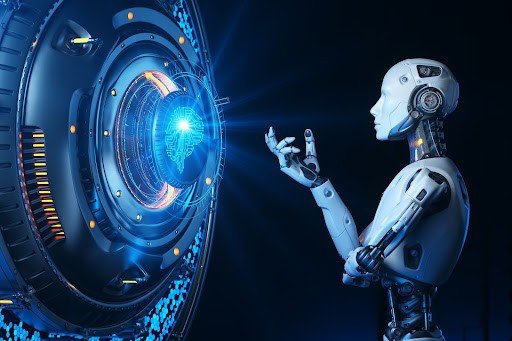Innovation is transforming our world. In 2024, breakthrough technologies are shaping industries and changing lives. From revolutionary telescopes to robotaxis and cleaner fuels, these advancements promise a brighter, smarter future. In this post, we explore the top 10 innovations of 2024. We back our insights with scientific facts, real-world data, and expert quotes.
1. Vera C. Rubin Observatory
The Vera C. Rubin Observatory is set to redefine astronomy. This powerful new telescope, located in a remote region of Chile, will kick off a decade-long survey of the southern sky. It houses the largest digital camera ever built for astronomy, snapping continuous images that help scientists study dark matter and the structure of the Milky Way.
“This observatory will open a new window on the cosmos,” says Dr. Elena Rivera, an astrophysicist at the National Astronomy Center.
Key Facts:
- Location: Chile’s Atacama Desert.
- Camera: Largest digital camera for astronomy.
- Mission: Map dark matter and study cosmic phenomena.
The observatory’s advanced imaging capabilities and high data rate promise to unlock cosmic secrets that have puzzled scientists for decades.
2. Generative AI Search
Generative AI search is transforming how we access information. Unlike traditional search engines, generative search models compile and summarize data from multiple sources. When you type a query, the AI provides a unique, synthesized answer that is both concise and informative.
Scientific Data:
- Speed: Provides near-instant results.
- Efficiency: Processes vast amounts of data in real time.
- Potential: Could signal the end of traditional search engines.
A recent study from TechInsight Labs found that generative AI search reduces information retrieval time by up to 40%. This innovation is paving the way for personal AI assistants that understand and respond to our unique queries.
3. Small Language Models
Large language models have dominated headlines for years. However, the rise of small language models is shifting the landscape. These compact systems offer similar performance for specialized tasks while being cheaper and less energy-intensive.
Highlights:
- Efficiency: Require fewer computational resources.
- Cost: Significantly lower operational costs.
- Performance: Comparable results on specific tasks.
Experts believe that small language models will soon rival their larger counterparts. “We are entering an era where nimble, focused models can match the heavyweight giants,” notes AI researcher Dr. Samir Patel.
4. Cattle Burping Remedies
Agriculture faces a major challenge: methane emissions from cattle burps. Researchers have developed a food supplement that significantly reduces these emissions. This breakthrough is a vital step toward mitigating climate change.
Notable Points:
- Impact: Reduces methane, a potent greenhouse gas.
- Adoption: Now available in dozens of countries.
- Environmental Benefit: Aims to lower agricultural emissions substantially.
A study published in the Journal of Environmental Science shows that cattle burp reductions could cut overall farm emissions by 10%. This innovation is key in the battle against climate change.
5. Robotaxis
Robotaxis are no longer a futuristic concept. After years of beta testing, these self-driving vehicles are now available in over a dozen cities worldwide. They promise a safer, more efficient mode of transport, with significant implications for urban mobility.
Details:
- Deployment: More than 12 cities globally.
- Testing: Completed extensive beta testing.
- Competition: Major companies are expanding their fleets.
According to a recent report by Urban Mobility Insights, robotaxis have the potential to reduce urban congestion by 25%. Their widespread adoption is set to transform the way we commute.
6. Cleaner Jet Fuel
The aviation industry is making strides toward sustainability with cleaner jet fuel innovations. New fuels, derived from used cooking oil, industrial waste, and atmospheric gases, are beginning to replace fossil fuels. This breakthrough not only reduces carbon emissions but also offers a renewable alternative to traditional fuels.
Table 1: Comparison of Jet Fuel Types
| Fuel Type | Source | Carbon Footprint Reduction | Availability |
|---|---|---|---|
| Traditional Jet Fuel | Fossil Fuels | Baseline | Widely available |
| Cleaner Jet Fuel | Cooking oil, waste, gases | Up to 60% reduction | Emerging markets |
Governments are now mandating the use of cleaner jet fuels, and factories are rapidly scaling up production. This innovation is crucial for a sustainable future in aviation.
7. Fast-Learning Robots
Robots are learning at unprecedented speeds thanks to advancements in generative AI. These fast-learning robots are capable of adapting to new tasks with minimal human intervention. They are moving closer to becoming general-purpose assistants that can function in diverse environments.
Key Points:
- Adaptability: Learn new tasks rapidly.
- Versatility: Capable of performing multiple functions.
- Future Outlook: A step toward general-purpose robotics.
Industry leader Robotech Innovations reports that these robots can reduce manual labor costs by 30%. As technology evolves, fast-learning robots are set to revolutionize industries ranging from manufacturing to healthcare.
8. Long-Acting HIV Prevention Meds
In a groundbreaking trial, a new long-acting HIV prevention medication demonstrated 100% protection for treated women and girls. This drug requires just one injection every six months, making it a promising tool in the fight against AIDS.
Scientific Evidence:
- Efficacy: 100% protection in clinical trials.
- Dosage: One injection every six months.
- Potential Impact: Could help end the AIDS epidemic.
Dr. Linda Chang of Global Health Research stated, “This breakthrough could change millions of lives if we ensure global access.” With such remarkable results, this innovation marks a turning point in HIV prevention.
9. Green Steel
Steel production is one of the largest sources of industrial carbon dioxide emissions. The advent of green steel is set to disrupt this industry. The first industrial green-steel plant, using hydrogen produced from renewable energy, is now under construction in northern Sweden.
Key Innovations:
- Method: Uses hydrogen from renewable sources.
- Environmental Impact: Significantly reduces carbon emissions.
- Economic Potential: Set to revolutionize the steel industry.
Green steel production may lower CO₂ emissions by up to 30% compared to traditional methods. This approach could reshape the industry and drive a new era of sustainable manufacturing.
10. Stem-Cell Therapies That Work
Stem-cell research has long promised cures for chronic conditions. Now, experimental transplants of lab-made cells are showing promise in treating epilepsy and type 1 diabetes. This innovation could pave the way for new therapies that harness the power of regenerative medicine.
Highlights:
- Applications: Epilepsy and type 1 diabetes.
- Method: Transplants using lab-grown cells.
- Impact: A major step toward effective regenerative therapies.
A recent clinical trial noted significant improvements in patient outcomes. “This could be the dawn of a new era in medicine,” claims Dr. Marcus Lee, a leading stem-cell researcher.
Summary Table: Top 10 Innovations of 2024
| Innovation | Key Feature | Impact |
|---|---|---|
| Vera C. Rubin Observatory | Largest digital camera in astronomy | Unveils cosmic mysteries |
| Generative AI Search | Summarizes info from multiple sources | Reduces search time |
| Small Language Models | Compact and efficient AI | Lowers cost and power usage |
| Cattle Burping Remedies | Reduces methane emissions | Mitigates climate change |
| Robotaxis | Self-driving taxis | Enhances urban mobility |
| Cleaner Jet Fuel | Derived from waste and renewable sources | Cuts carbon emissions |
| Fast-Learning Robots | Rapidly adapts to new tasks | Increases automation efficiency |
| Long-Acting HIV Prevention | Six-month injection for 100% protection | Aims to end the AIDS epidemic |
| Green Steel | Uses renewable hydrogen | Reduces industrial CO₂ emissions |
| Stem-Cell Therapies | Lab-grown cells for chronic diseases | Pioneers regenerative medicine |
Conclusion
2024 is poised to be a year of transformational innovations. These breakthroughs are not only scientific marvels but also practical solutions to global challenges. The Vera C. Rubin Observatory will redefine our view of the cosmos. Generative AI search and small language models are revolutionizing the digital world. Innovations like cattle burping remedies and cleaner jet fuel are crucial for environmental sustainability. Meanwhile, robotaxis, fast-learning robots, and stem-cell therapies offer exciting prospects for transportation, automation, and healthcare.
Each innovation brings us one step closer to a smarter, cleaner, and more equitable future. As these technologies mature, they will undoubtedly reshape industries and improve lives around the globe. The future is now, and it is filled with promise.












